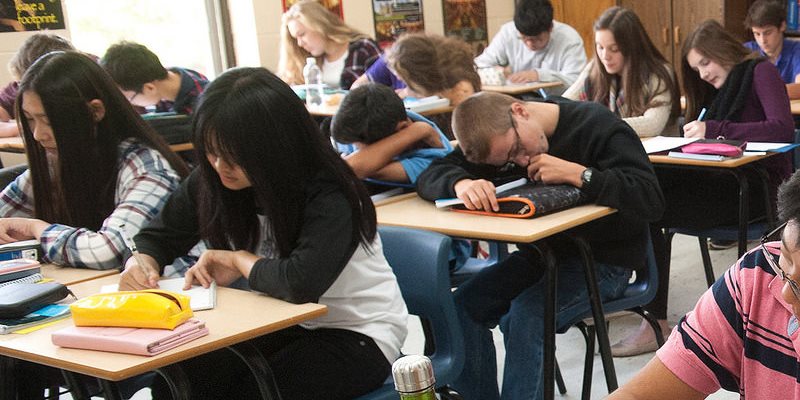Reality check—smaller high school classes don’t improve student performance

Thanks to a tentative deal Sunday evening, Ontario education support workers—custodians, clerical staff, early childhood educators—won’t go on strike. But contract negotiations between the Ford government and the teacher unions are ongoing amid the government’s plan to increase class sizes.
Some quick history. Back in March, the Ford government announced an increase in average high school class sizes from 22 to 28 students per teacher, to be phased in over four years. The secondary teachers’ union shot back, warning of strike action to protect the more than 5,000 jobs it claimed were threatened. Ontario’s complicated and slow-moving teacher bargaining was grinding toward confrontation when the government announced the increase will be limited to 22.5 students this year.
Whether this will avoid strike action by teachers remains to be seen, but we’ll hear a lot about class sizes in the months and years ahead. Here’s a few facts to keep in mind as the rhetoric flies.
First, this is about secondary school class size. Extensive research has shown the positive effects associated with small classes are primarily limited to early grades. As a new study published by the Fraser Institute shows, these benefits are typically small, help fewer students than often claimed, and cost much more than other ways of improving schools. And even the limited benefits evaporate at the secondary level with no convincing evidence linking small classes to improved student performance. To the contrary, there’s evidence showing students can achieve higher test scores in larger classes.
Consider the Programme for International Student Assessment (PISA) tests, which every three years measure the performance of 15 year olds from more than 70 countries on standardized tests of reading, math and science. PISA also uses school principal reports to measure average class size. Canada has an excellent PISA record, placing 10th in math, 7th in science and 3rd in reading among the 72 countries participating in 2015, the latest year of data. And yet, Singapore, the top-scoring country in math and science, averaged eight more students in its high school classes than Canada.
Back in Ontario, home to 45 per cent of Canada’s secondary school students, the average secondary school class size (24.8 students) was smaller than the average class size in 17 OECD countries including Australia, France, Germany, Japan and the United States.
Ontario’s average secondary school class size was also smaller than the Canadian average of 26.4 students (only Manitoba and Saskatchewan had smaller high school classes). Classes in Quebec (30.1 students) and Alberta (28.5 students) were significantly larger, and slightly larger in British Columbia (25.4 students).
But despite Ontario’s much smaller classes, students in Quebec, Alberta and B.C. had significantly higher PISA scores in science. Quebec and B.C. also had significantly higher scores in math. Results were statistically even in reading. But Ontario had the lowest score in all three subjects.
When phased in over the next four years, Ontario’s larger classes will remain smaller than classes in Quebec and Alberta. Will Ontario’s larger classes decrease or eliminate the achievement gap with other provinces? There’s no reason to think so. Many factors contribute to classroom dynamics and student performance. Still, the data from the other big four provinces (and elsewhere around the world) show that older students achieve higher scores in larger classes.
Small classes are popular with parents and teachers. They are also expensive. Can this spending be justified by a provincial government faced with persistent budget deficits and rising education costs? Given that secondary school students can and do perform better with larger classes, Ontario’s decision to stop subsidizing small classes in high schools is long overdue. If we’re serious about raising test scores, we should invest the money saved in other ways more likely to produce better results for our kids.
Author:
Subscribe to the Fraser Institute
Get the latest news from the Fraser Institute on the latest research studies, news and events.

